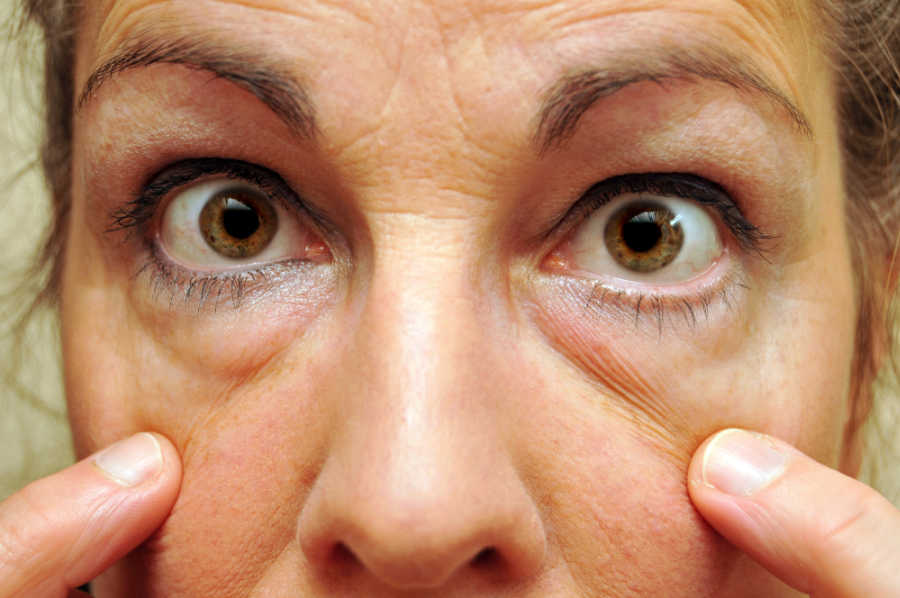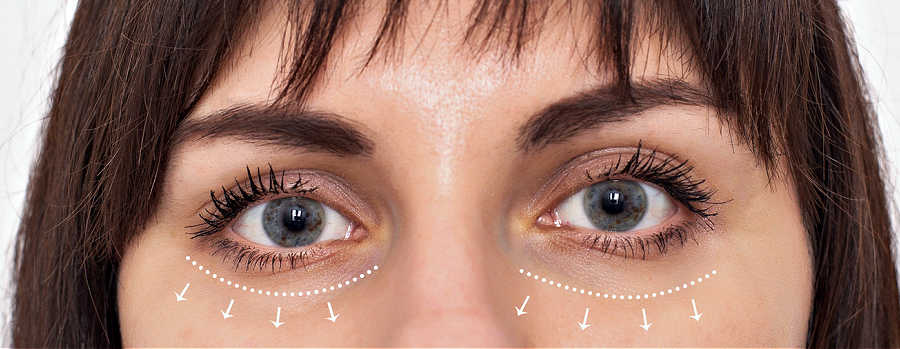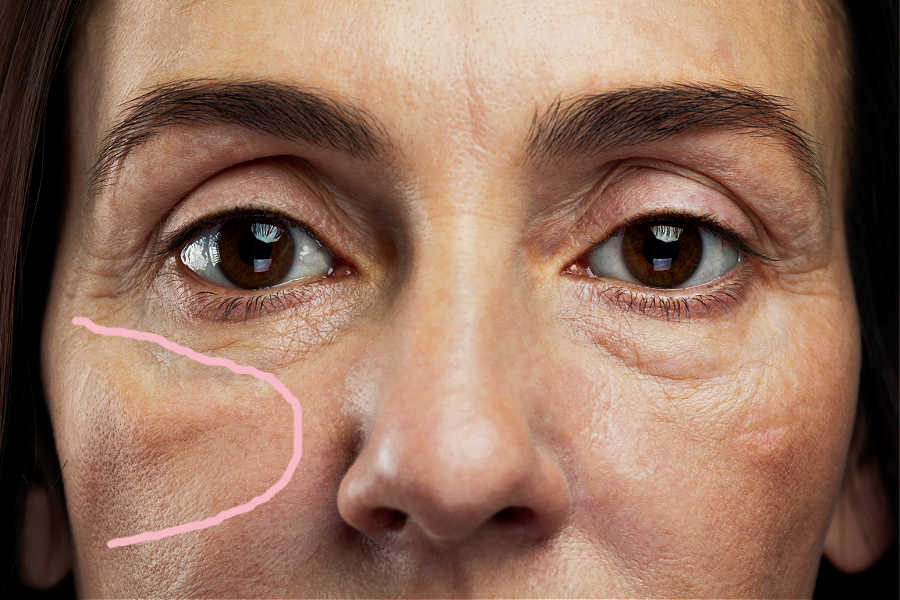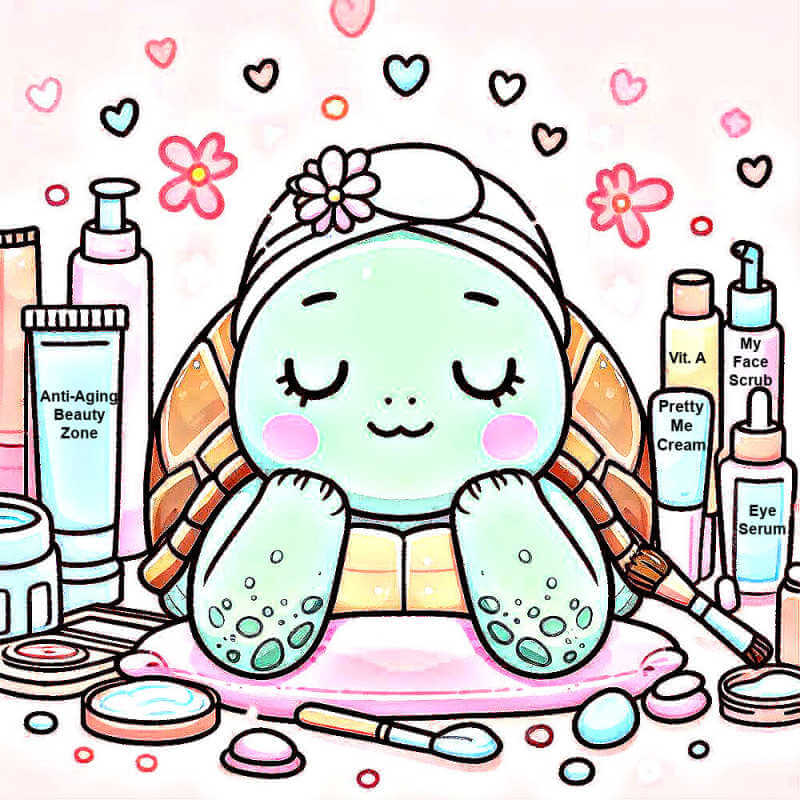As an Amazon Associate, I earn from qualifying purchases and other affiliate links. I only recommend products I’ve tried or researched.
- Home
- Malar Bags Vs Festoons
Malar Bags vs Festoons
We'll explain the difference between festoons and malar mounds. And how to prevent, treat or get rid of them.
Malar bags vs festoons: What is the difference between the two?
While they may appear similar and are often confused with lower eye bags, it's important to note that malar bags and festoons are distinct conditions.
One thing is certain: both can be quite bothersome, potentially giving you an older or tired appearance.
In this article, we'll explain:
- difference between malar bags and festoons
- what causes them
- preventive measures you can take
- how you can treat or fix them using natural and general treatments

Malar bags vs Festoons: Difference and causes
Ok, so what's the difference between the two? Not much, except for their position and texture.
Malar bags. Also known as cheek bags, are pouch-like swellings that are specifically located near the lower eyelid and above the cheekbone. They are situated higher on the face compared to festoons.
Festoons. Typically, sit lower on the face compared to malar bags. These pouch-like swellings are commonly located in the cheek area, and can extend into the mid-cheek region.
Let's break down the difference between festoons and malar bags.
What causes malar bags

Causes: Malar bags and festoons are basically the displacement of malar fat pads. This happens when the muscles around our eyes become weak and the natural protective “fat pouches” around the eyes starts to separate, and droop down, forming bags under the eyes and on the cheekbones.
The combination of swelling (edema) and excess fat pads in the cheek area causes this bag like appearance. Aging, sun exposure, and genetic factors can all contribute to the displacement of malar fat pads.
Location: Malar bags are pouch-like swellings that appear near the tear trough of the lower eyelid and above the cheekbone.
Appearance: Malar bags are usually smaller and more localized compared to festoons. They create a bulging appearance in the cheek area.
Texture: They may appear firmer in texture compared to festoons.
What causes festoons under eyes?

Causes: Festoons have similar causes as malar bags. But they are characterized by the additional effects of weakened skin and stretched or weakened muscles in the lower eyelid area.
Basically, festoons can be seen as a more pronounced or severe variation of malar bags.
Location: Festoons typically appear in the lower eyelid upper cheek area, but they can extend into the mid-cheek region.
Appearance: Festoons can create a baggy appearance in the near the cheekbone area. But they are typically larger and more prominent than malar bags. They sometimes look like draped or hammock like skin pouches filled with fluid or fat.
Texture: They may feel softer and have a more loose and wrinkled texture compared to malar bags.
Both festoons and malar bags can be annoying and make you look tired or aged. Treatments are not always straight forward and will vary from person to person depending on each individual.
We'll list some preventive measures and several types of treatments, ranging from natural and nutritional, to surgical.
Malar - festoons prevention
Before we cover some treatment options, let's look at some preventative measures that might help prevent these issues:
Prevention
Assuming that this is not due to genetic causes, there are some basic preventative measures we can take to help prevent this from happening as we age.
1. Sunscreen: We all know this. Sun damage kills skin collagen. It's never too late, as studies have shown that sunscreen can prevent and even help reverse skin aging. Use a sunscreen daily!
2. Skin Tightening Heating Treatments: Procedures such as Thermage and Ultherapy are great for tightening the skin, but they come with a potential side effect: facial fat loss. It's crucial to ensure that your practitioner is highly experienced in performing these treatments.
3. Poor Diet: Eating excessive sugar, carbs and processed foods disrupt collagen's function and structure through advanced glycation. This in turn leads to skin aging, wrinkles and loss of elasticity. See: eat real food for healthy skin and diet for healthy skin.
Malar bags vs festoons: Treatments
Keep in mind, the proper treatment depends on the severity of your situation.
Natural Treatments
Facial Exercise: According to CFF, specific facial exercises can help reposition fat pads, and volumize the cheek area by building muscle and strengthen ligaments. Plus, face exercises help you look better as you age. See the 3 Step Cheek Builder video. This is a great exercise to help build up the cheek muscles and firm the face.
Face Massage: Use organic creams made with natural oils to massage your face daily. This helps increases blood flow and stimulates collagen production. Any type of face massage is good. If you're looking for ideas, check out the Circle Up Rub here.
Topical Treatments: Over-the-counter creams containing ingredients like retinoids can help improve the texture and tone of the skin in the affected area.
General Treatments
Antibiotics: This novel approach involves the use of antibiotics via injection. While festoons are not caused by infections, plastic surgeons have found that certain antibiotics like tetracycline may cause a reduction of cavities and potentially decrease the size of the fluid accumulation typically associated with festoons. Reference: New Treatment for Malar Festoons and Big Eyelid Bags - W Cosmetic Surgery™
PRP: Platelet-rich fibrin (PRF) injections are a regenerative medical treatment used for tissue healing and rejuvenation. While there is limited research on PRF for malar bags, it might help by stimulating collagen production, promoting tissue regeneration, reducing inflammation and improving skin texture and reducing puffiness.
Dermal Injections: Fillers can be used to smooth the transition between the malar bags or festoons and the surrounding skin. They can add volume and reduce the appearance of shadows, improving the overall appearance.
However, it's important to use non water drawing fillers like Sculptra. Non-water drawing fillers are preferred for malar bags because they don't exacerbate swelling or puffiness in the under-eye and cheek area.
Laser or Radiofrequency Therapy: These non-surgical treatments can help tighten the skin in the area, reducing the prominence of malar bags and festoons.
Surgery: In more severe cases, surgical procedures such as blepharoplasty (eyelid surgery) or a mid-face lift may be recommended to remove excess skin and fat or reposition tissue to improve the appearance.
FAQ: Malar bags vs festoons
Q: Are festoons and malar bags the same thing?
Q: Are festoons and malar bags the same thing?
A: Both malar bags and festoons involve puffiness in the lower eyelid and cheek area. But festoons are usually larger and are found lower on face, near the cheek bones.
Malar bags are puffy or swollen areas that sit under the lower eyelids. They look like regular under eye bags, but can be larger and protrude out more.
Q: How do you shrink a malar bag?
Q: How do you shrink a malar bag?
A: There is no guaranteed method to shrink malar bags permanently through non-surgical means.
Malar bags are often caused by a combination of factors, including genetics, aging, and skin laxity, making them hard to shrink without medical intervention.
Q:What makes malar bags worse?
Q:What makes malar bags worse?
A: One of the biggest factor that can make malar bags look worse include fluid retention and alcohol abuse. Sticking with a healthy, low-soduim, low alcohol consumption diet can help.
Other things that can make them look worse is allergies, smoking, aging, and sun exposure.
Q: Does massaging festoons help?
Q: Does massaging festoons help?
A: Massaging festoons might help improve lymphatic drainage and puffiness. But, how well it helps, will vary from person to person.
Want More?
I share quick routines, beauty tweaks, and what’s working for me — straight to your inbox. Join the Club and get this free Cheek Shaper Video.
About the Author:
Linda Robison is a Facial Fitness Specialist and the founder of Anti-Aging Beauty Zone. With decades of hands-on experience, she shares practical, natural ways to lift and brighten mature skin—without expensive or invasive treatments.
Before you go ....
Please tap on the💙in the bottom right corner if you found this page helpful.
FOLLOW ME FOR MORE TIPS:
SHARE OR SAVE FOR LATER:


